돈으로 광고. 이 광고를 클릭하면 보상을 받을 수 있습니다.광고 
| 최고의 온라인 보험 회사 | 맞춤형 지원에 가장 적합 | 상담원 지원 비교 쇼핑에 가장 적합 | 빠른 견적에 가장 적합 | 녹색 절약 옵션에 가장 적합 | |
   | 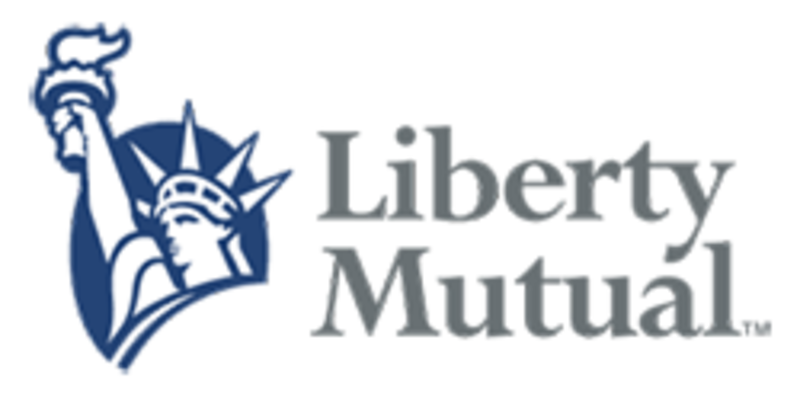   |    |    |    | |
| 레모네이드 | 리버티 뮤추얼 | 프로그레시브 | 하마 | 여행자 | |
| 저희 파트너 | 저희 파트너 | 저희 파트너 | 저희 파트너 | 저희 파트너 | |
| J.D. 전력 만족도 점수 | 해당 없음 | 해당 없음 | 835 | 해당 없음 | 803 |
| 오전 최고 평점 | 해당 없음 | 답> | A+ | A- | A++ |
| 할인 | 주택 구매자, 10% 신규 고객 | 새 주택, 리모델링된 주택, 주택 안전 기능, 다중 정책, 높은 공제액, 청구 없음 | 새 주택, 주택 안전 기능, 다중 정책, 더 높은 공제액, 청구 없음 | 가정 안전 기능 | 새로운 주택, 주택 안전 기능, 다중 정책, 청구 없는 |



해당 없음
이다. 최고 등급해당 없음
할인주택 구매자, 10% 신규 고객
맞춤 지원에 가장 적합


해당 없음
이다. 최고 등급답> 할인
새 주택, 리모델링된 주택, 주택 안전 기능, 다중 정책, 높은 공제액, 청구 없음
상담원 지원 비교 쇼핑에 가장 적합


835
이다. 최고 등급A+
할인새 주택, 주택 안전 기능, 다중 정책, 더 높은 공제액, 청구 없음
빠른 견적에 가장 적합


해당 없음
이다. 최고 등급A-
할인가정 안전 기능
녹색 절약 옵션에 가장 적합


803
이다. 최고 등급A++
할인새로운 주택, 주택 안전 기능, 다중 정책, 청구 없는
모기지가 있는 경우 대출 기관에서 주택 소유자 보험에 가입하도록 요구할 것입니다.
모기지론을 갚고 재산을 완전히 소유하고 있다면 그것이 바로 올바른 주택 소유자 정책으로 투자를 보호해야 하는 더 큰 이유입니다.
주택 소유는 다음을 할 수 있음을 의미합니다.
아니면 평생 누구에게도 집세를 내지 않고 즐길 수 있습니다.
집은 미래의 재정적 기반이 될 수 있으며 시간이 지남에 따라 가치가 커질 큰 자산입니다.
그러나 재난이 닥치면 몇 년 동안 정기적으로 집에 대한 애정을 가지고 유지보수를 한다고 해서 큰 재정적 손실을 막을 수는 없습니다.
번개, 바람 피해, 화재, 심지어 떨어지는 우주 정거장의 일부라도 값비싼 수리 또는 교체 비용에 직면하게 되며 이로 인해 그동안 일했던 모든 것을 위태롭게 할 수 있습니다.
돈으로 광고. 이 광고를 클릭하면 보상을 받을 수 있습니다.광고


이것이 바로 올바른 주택 소유자 보험에 가입하고 언제 어떻게 사용하는지 아는 것이 매우 중요한 이유입니다.
이들은 수년간 입증된 실제 성과와 사용 가능한 보장 옵션을 기반으로 한 2021년 최고의 주택 소유자 보험 회사입니다. 그러나 모든 회사가 모든 시장에서 운영되는 것은 아닙니다.


레모네이드는 번거로움 없이 즉석 주택 보험 견적을 제공하며 그 요금은 월 $25부터 시작합니다. 이 보험 회사는 온라인 및 모바일 앱을 통해 운영되며 Google Play에서 평균 별점 4.9를 자랑합니다.
레모네이드는 최신 기술을 사용하기 때문에 몇 번의 버튼 클릭으로 빠른 보험 견적을 제공할 수 있습니다. 또한 연중무휴 24시간 고객 서비스를 통해 매우 빠른 청구 프로세스를 약속합니다. 대부분의 보험 청구가 전자적으로 처리되지만 Lemonade는 또한 도중에 질문에 답변할 수 있는 인적 고객 서비스 에이전트도 제공합니다.
레모네이드를 사용하면 필요에 맞게 적용 범위를 맞춤화할 수 있습니다. 주택 소유자 보험 정책에는 거주지, 기타 구조물, 개인 자산, 타인에 대한 의료비, 사용 손실 및 개인 책임에 대한 보장이 포함될 수 있습니다.


Home Insurance Connect는 온라인 보험 플랫폼으로, 이를 사용하여 한 곳에서 여러 제공업체의 주택 소유자 보험을 비교하고 쇼핑할 수 있습니다. 무료 견적을 받으려면 우편번호와 몇 가지 기본 정보를 입력하기만 하면 됩니다. 특정 기준을 충족하면 주택 소유자 보험료를 최대 40%까지 절약할 수 있습니다.
Home Insurance Connect는 직접 보험사가 아님을 기억하십시오. 대신 이 회사는 여러 주택 소유자 보험 회사 간의 가격을 쉽게 비교할 수 있는 시장 역할을 합니다. 파트너 중 한 곳의 새로운 주택 소유자 보험 정책을 결정하기 전에 각 제공업체를 조사하고 고객 서비스 평판, 청구 절차 및 제3자 등급을 확인하십시오.


Liberty Mutual은 또한 전국적으로 100년 이상 봉사해 왔습니다. 전국 주택 소유자 보험 시장의 7%를 차지하는 Liberty Mutual은 안정성, 내구성 및 풍부한 경험을 제공합니다.
독립적인 신용 평가 기관은 회사에 재무 건전성에 대해 높은 점수를 줍니다. 우리는 회사의 모바일 앱과 온라인 고객 경험을 좋아합니다.
회사가 귀하의 보장에 액세스하고 변경할 수 있는 안정성과 최신 방법을 제공할 수 있다면 더 자세히 살펴볼 가치가 있다고 생각합니다.
제한된 시간 동안 즉시 12% 할인을 받으세요. 온라인 Liberty Mutual 보험 견적.


1937년부터 사업을 시작한 Progressive는 동네에서 완전히 새로운 것은 아닙니다. 그러나 최근 수십 년 동안 명성과 시장 점유율에서 꾸준히 성장했습니다.
원하는 경우 온라인이나 전화로 고객 서비스 담당자에게 쉽게 접근할 수 있는 Progressive를 좋아합니다.
또한, 회사가 독립 기관에서 가장 높은 등급을 받은 것은 물론입니다.
적용되는 19개 주 중 하나에 거주하고 있다면 지금 프로그레시브 주택 보험 견적을 받으십시오.


고객 서비스와 보장에 대한 새로운 접근 방식에 대한 이 모든 이야기는 Hippo 보험을 떠올리게 합니다.
Hippo는 "최고 수준의 고객 서비스"를 자랑스럽게 생각하며 청구 프로세스를 통해 기꺼이 도와드립니다.
Hippo는 12개의 다른 상태에서 사용할 수 있습니다.


보험처럼 변동성이 큰 비즈니스에서 160년 동안 일관성을 유지해 왔다는 점에서 잘못될 수는 없다고 생각합니다.
뉴욕시에 기반을 둔 Travellers Insurance는 주택 소유자 정책에서 중요한 요소인 전국적으로 보험을 작성합니다.
전국의 고객과 함께 기업은 단기간에 많은 클레임을 발생시키는 허리케인과 같은 재해를 보다 쉽게 흡수할 수 있습니다.
A.M.과 같은 독립적인 보험 평가 기관 Best와 Moody's도 Travelers와 유사하여 안정성에 대해 지속적으로 높은 점수를 주고 있습니다.
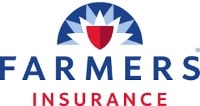

추세를 보기 시작했는지도 모릅니다. 안정적인 적용 범위와 견고한 고객 서비스를 제공하는 회사는 시장과 우리 목록에서 계속 좋은 성과를 거두고 있습니다.
Farmers는 틀에 맞는 또 다른 전국적인 회사입니다. 캘리포니아에 기반을 둔 Farmers는 테스트를 거쳤으며 계속해서 탁월합니다.
우리는 특히 집에 새로운 안전 기능을 갖추거나 일반적으로 최신 안전 기능이 제공되는 신축 주택에 거주함으로써 얻을 수 있는 할인에 매력을 느낍니다.


현역, 퇴역 군인, 군인 또는 퇴역 군인의 가족이 아닌 한 USAA의 요금 및 고객 서비스를 이용할 수 없습니다.
그러나 이미 USAA인 경우. 회원이시면 시장에서 최고의 주택 소유자 보험 및 고객 서비스를 찾을 수 있습니다. 잠재 고객의 풀이 제한적임에도 불구하고 우리는 이 사람들을 여기에 나열하기에 충분하다고 생각합니다.
Standard &Poor's와 A.M. USAA에 재정 안정성에 대한 최고 등급을 부여하는 것도 최선이라고 생각합니다.
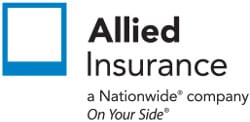

Nationwide Insurance 제품군의 일부인 Allied Insurance는 경쟁력 있는 요금으로 견고하고 유연한 보장을 제공합니다.
질문에 대한 답변을 전화로 받고 싶다면 Allied의 고객 서비스 접근 방식에 감사할 것입니다.
90년의 경험을 가진 Nationwide가 정책을 뒷받침하기 때문에 Allied는 신뢰할 수 있고 안정적인 파트너입니다.
이미 Nationwide 고객이라면 다중 정책 할인 및 무청구 할인에 대해 문의하십시오.
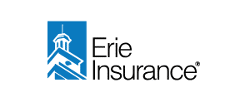

Eerie Home Insurance는 고객 서비스에 탁월하며 보장 범위도 강력합니다.
고객 불만 비율이 가장 낮고 Better Business Bureau에서 A+ 등급을 받은 Eerie는 해당 지역에 거주하는 경우 훌륭한 주택 소유자 보험 파트너가 될 수 있습니다.
이다. Best는 재정 안정성에 대해서도 Eerie의 최고 점수 중 하나인 A+를 부여합니다.
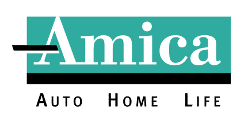

Amica는 우리가 가장 좋아하는 제품 중 일부에 대한 인지도가 없지만 고객이 긍정적인 말을 많이 하기 때문에 목록에서 계속 올라가고 있습니다.
다른 보험 회사와 마찬가지로 Amica도 부정적인 평가를 받습니다. 그러나 대부분의 경우와 달리 고객의 문제를 해결하기 위해 하나씩 응답합니다.
Amica는 재정적 안정성에서도 높은 점수를 받았습니다. 국가 광고 및 브랜드 관리에 관해서는 별로 할 일이 없지만 전국의 사람들은 이 백년 된 회사에 대해 계속 듣고 있습니다.


지금쯤이면 고객 서비스와 적용 범위 품질에서 좋은 점수를 받지 못한 회사는 이 목록에 포함될 수 없다는 것을 알고 계실 것입니다.
이는 국가장군에게도 해당되지만 우리의 시선을 사로잡는 다른 것들도 있습니다.
National General은 전체 손실을 경험한 보험 계약자가 보장 범위가 충분하지 않더라도 투자 가치를 대체하도록 돕는 데 탁월합니다.
또한 회사는 에너지 및 유지 관리 비용을 절감할 수 있는 보다 지속 가능하고 환경 친화적인 재료로 건물을 재건하고자 합니다.
자동차 보험과 마찬가지로 주택 소유자 보험은 자산의 다양한 측면에 대해 다양한 보호를 제공하는 패키지로 제공됩니다.
주택 소유자 보험은 다음을 보호해야 합니다.
이러한 보호는 언뜻 보기에는 간단해 보이지만 보험에 가입할 때는 보험 정책이 무엇을 보장하는지 정확히 알아야 합니다.
그럼 이제 각 커버리지 영역을 자세히 살펴보겠습니다.
당연히 주택 소유자 보험은 차고 또는 부착된 도구 창고와 같은 부착된 구조물과 함께 주택 자체에 적용됩니다. 추가 옵션이 있는 경우 가정 보증에 포함될 수 있습니다.
주택 보험 하면 이 보험이 가장 먼저 떠오를 것입니다.
일반적인 정책은 다음과 같은 일반적인 위험에 의해 손상되거나 파괴된 주거지를 수리하거나 교체하는 데 비용을 지불합니다.
이러한 종류의 사고로 주택이 손상되거나 파괴된 경우 주택 소유자 정책에 클레임을 제기할 수 있습니다.
귀하의 보장 금액, 공제액 및 아래에서 다룰 기타 중요한 정책 세부 정보에 따라 귀하의 보험 회사는 귀하가 다시 정상으로 돌아갈 수 있도록 도와드릴 것입니다.
주택 소유자 정책에는 다음과 같은 자산의 단독 건물에 대한 보장도 포함됩니다.
일반적으로 이러한 구조에 대한 보장은 주거 보장의 백분율로 설정됩니다.
그 이상이 필요한 경우(예:집 뒤에 단독 아파트가 있다고 가정해 보겠습니다) 보장의 해당 부분을 늘리는 방법에 대해 보험사에 문의하십시오.
보험사는 집에서 제거할 수 있는 개인 자산을 고려하며 주택 소유자 정책은 이러한 항목도 보호해야 합니다.
예를 들어 연기나 화재로 인해 벽과 지붕이 손상되면 일부 가구와 전자 제품도 손상될 수 있습니다.
마찬가지로, 창문을 깨는 도둑은 아마 여기서 멈추지 않을 것입니다. 그는 당신의 집에 접근한 후 당신의 물건 중 일부를 훔칠 것입니다.
물론 개인 자산을 소유하고 있음을 증명해야 하므로 최신 인벤토리를 보유하는 것이 중요합니다.
이에 대해서는 나중에 자세히 알아보겠습니다.
이웃 우편 배달부가 집 앞마당에 있는 싱크홀에 발을 들여 놓고 무릎을 삐면 그로 인한 치료나 임금 손실에 대해 개인적으로 책임을 져야 할 수 있습니다.
가을 바베큐를 하는 동안 누군가가 느슨한 포장 도로에 걸려 넘어지거나 갈퀴를 밟은 경우에도 마찬가지입니다.
예, 귀하의 마당과 집은 아마도 블로퍼 릴의 장면이 아닐 것입니다. 그러나 사고가 발생하고 그로 인한 부상과 의료비가 장난이 아닐 것입니다.
주택 소유자의 책임 보장은 이러한 종류의 예상치 못한 비용으로부터 귀하를 보호해야 합니다.
최악의 상황이 발생하여 집이 손상되거나 파괴되어 집에서 살 수 없는 경우 다른 곳에서 살 돈을 지불할 방법이 필요합니다.
주택 소유자 정책은 추가 생활비(또는 ALE) 보장을 통해 이 문제를 해결해야 합니다.
구조, 책임, 개인 자산, 추가 생활비 - 주택 소유자 정책은 해야 할 일이 많습니다. 투자를 가장 잘 보호할 수 있도록 설정하는 것이 중요합니다.
모든 사고가 소송으로 이어지는 것은 아닙니다. 방문자가 집에서 부상을 입었고 의료비를 지불하여 이를 바로잡고자 한다면 일부 주택 소유자 정책이 도움이 될 수 있습니다.
대부분의 정책은 이러한 종류의 비용을 약 $1,000로 제한하지만 더 많은 보장을 선택할 수 있습니다. 일부 보험사는 최대 $5,000의 보장을 제공합니다.
이 보장은 모든 종류의 의료 비용을 지불하지 않습니다.
예를 들어 친구가 집에서 독감에 걸렸고 그가 구입한 통조림 치킨 수프에 대해 보험에서 지불하기를 원했다면 그런 일은 일어나지 않을 것입니다.
보험사의 관점에서 생각해 보면 이치에 맞습니다. 친구가 당신 집에서 독감에 걸렸다고 정말 확신할 수 있을까요?
우리 대부분은 특히 보험과 같은 반복 지출에 대해 비용을 절약하고 자원을 늘리는 것을 좋아합니다.
하지만 주의할 점은 다음과 같습니다. 월예산을 줄이기 위해 주택 소유자 보장을 희생하는 것은 장기적으로 매우 비용이 많이 들 수 있습니다. .
예를 들어, 나무 가지가 부엌을 통해 떨어졌고 지붕, 벽, 창문 및 가전 제품을 수리할 충분한 범위가 없었으며 이로 인해 발생할 수 있는 물 손상도 포함됩니다. 보험 적용이 중단된 후 탭을 선택하십시오.
예산 낭비에 대해 이야기하십시오!
이것은 찾을 수 있는 가장 낮은 수준의 적용 범위를 뛰어 넘는 것 이상으로 단순히 적용 범위를 최대화해야 한다는 의미가 아닙니다.
대신, 현명하고 효율적인 접근 방식을 취해야 합니다. 실제 요구 사항을 결정하고 필요한 보장을 최대화하는 보장 계획을 세우면서 많이 의존하지 않을 보장에 대한 지출을 줄이십시오.
예를 들어, 마당이 없는 작은 콘도에 혼자 살고 손님을 거의 접대하지 않는 경우 책임 보장 한도를 초과하지 않아도 됩니다.
하지만 이웃 중 몇 명이 침입을 경험했다면 개인 소지품 보호에 더 많이 투자하는 것이 좋습니다.
비용을 절약하면서 꿈을 지키려면 필요하지 않은 비용을 지불하지 않도록 보장을 맞춤화하십시오.
더 높은 주택 소유자 보험 공제액을 선택하여 월예산에 대한 압박을 완화할 수도 있습니다.
예를 들어, $2,000 공제액은 $500 공제액이 있는 정책보다 현저히 낮은 보험료에 액세스할 수 있게 해줍니다. 요금은 주마다 다르므로 얼마나 절약할 수 있는지 알아보려면 실제 견적을 받아야 합니다.
그러나 그러한 보험을 구매하기 전에 결정을 내리고 그러한 정책이 귀하의 라이프스타일에 맞는지 확인하십시오.
재산 피해 보험에 2,000달러 공제액이 있으면 집 수리 비용으로 처음 2,000달러를 지불해야 합니다. 2,000달러를 생각해낼 수 있다면 얼마나 좋을까요.
하지만 공제액을 계산할 수 없다는 것을 안다면 더 낮은 공제액을 받는 대신 더 높은 보험료를 지불하고 싶을 수도 있습니다.
공제액을 충족하면 월 보험료가 지불하는 보장이 해제되므로 공제액을 충족할 수 없는 경우 주택 소유자 정책은 꿈을 보호하려는 것만큼 유용하지 않습니다.
다른 한편으로는 청구서를 제출할 때 지불금 상한선을 낮추는 정책으로 비용을 절약할 수도 있습니다.
이렇게 하면 보험료를 많이 절약할 수 있지만 다시 한 번 주의하십시오. 보장이 지불하는 금액을 제한하면 집은 물론 다른 재산까지 위험에 빠뜨릴 수 있습니다.
예를 들어 책임 보장에 $50,000만 있고 $100,000 상당의 자산을 소유하고 있다면 자산을 보호받지 못한 채 남겨두게 됩니다.
누군가가 귀하의 마당에서 부상을 입고 귀하를 성공적으로 손해 배상 청구 소송을 제기한 경우, 법원은 귀하의 보험에서 보장하지 않는 금액을 지불하기 위해 귀하의 다른 자산을 매각하도록 명령할 수 있습니다.
아무도 자신의 재산에 끔찍한 일이 일어날 것이라고 예상하지 않습니다. 그러나 부상, 사고, 화재, 위험한 날씨와 같은 나쁜 일이 발생합니다.
예상치 못한 일이 발생할 경우 폭풍우를 이겨낼 수 있을 만큼 내구성이 뛰어난 정책을 마련하십시오.
지금까지 주택 소유자 보험에 돈을 저축하지 않는 방법에 대해 이야기했습니다.
하지 말아야 할 것들로 충분합니다. 보험료를 절약할 수 있는 방법에 대해 알아보겠습니다.
저렴한 보험을 찾는 가장 중요한 단계 중 하나는 견적을 찾는 것입니다.
주택 소유자, 세입자, 콘도, 집주인 또는 자동차 보험 상품을 구매하는 경우 Gabi가 목록의 맨 위에 있어야 합니다.
Gabi는 주택 및 자동차 보험 구매자에게 주요 제공업체의 빠른 요율을 제공하여 보험 증권을 얼마나 절약할 수 있는지 보여주는 무료 플랫폼입니다.
몇 분 만에 최대 20개의 견적에 액세스하고 정책을 원활하게 전환할 수 있는 옵션을 얻을 수 있습니다.
귀하의 유일한 작업은 번거로운 서류 작성이나 지루한 전화 통화 없이 현재 보험 플랜에 대한 링크를 업로드하거나 삭제하는 것입니다.
하지만 누군가와 채팅해야 하는 경우 Gabi의 전문가 팀이 문자나 전화만 하면 됩니다.
Gabi를 가정 및 자동차 보험에 대한 원스톱 상점으로 만드십시오.
자동차, 생명 등 다른 종류의 보험에 이미 가입했을 가능성이 있습니다. 지금까지 거래한 회사에 만족하고 기존 보험사가 주택 소유자 보장을 제공하는 경우 다중 보험 할인을 받을 자격이 있을 수 있습니다.
많은 보험사가 기존 고객에게 최상의 요율을 제공합니다.
여러 정책 할인이 절약할 수 있는 유일한 방법은 아닙니다. 고용주 또는 전문 조직에서 보험 할인을 제공하는지 확인하십시오.
그리고 보안 시스템을 설치하거나 특정 종류의 개조를 완료하면 보험료를 절약할 수 있는지 보험사에 확인하십시오.
많은 보험사에서 다음과 같은 할인을 제공합니다.
보험 회사마다 접근 방식이 다르므로 모든 회사에서 이러한 접근 방식을 모두 찾을 것으로 기대하지는 마십시오.
예, 보험료를 지불하므로 필요할 때 보험이 제공됩니다. 그러나 청구를 너무 많이 제출하면 보험사에서 보험료를 인상할 수 있습니다.
비생산적으로 들리지만 여전히 현실입니다. 클레임 부서에 자주 들어오는 고객은 더 높은 요율을 지불하는 경우가 많습니다. .
보험 회사를 바꾸는 것은 이러한 현실로부터 당신을 보호하지 못할 것입니다. 다른 주로 이사하여 다른 보험사가 필요한 경우 새 회사에서 이전 회사의 청구 내역에 액세스하여 더 높은 보험료를 청구할 수 있습니다.
분명히 합시다. 보험 회사의 도움이 정말로 필요하면 반드시 클레임을 제기하세요. .
예를 들어, 얼음 폭풍으로 인해 지붕이 수천 달러에 달하는 손상을 입었다면 해당 정책을 사용하고 싶을 것입니다.
Or if someone breaks in and steals $10,000 worth of furniture, technology, or appliances, use your policy.
But if your washing machine leaks and you need to replace some floor tiles, consider paying that out of pocket.
If you needed a new pickup truck and never hauled anything more than your recycling or an occasional sofa for a friend, a mid-size pickup would probably do the job.
You probably wouldn’t go shopping for moving vans or tractor-trailers.
Yet that’s what happens sometimes with insurance. Shoppers opt for more coverage than they need which means they pay more than they need to.
For example, if your home could be re-built for $175,000, you might not need $350,000 in coverage for your dwelling. If you have $75,000 in assets, $200,000 in liability coverage may be more than you need.
We mentioned this above, but it bears repeating:To find great coverage at a great price, go through your policy section by section and figure out whether each kind of coverage adequately protects your investment without over-protecting it.
Think of it like a new raincoat.
You won’t stay dry in a coat three sizes too small. But if it’s three sizes too large, you can create a new set of problems.
Pickup trucks and raincoats are one thing. It’s easy to find the right sizes when you’re shopping for durable products.
Insurance is different, though, right? It’s abstract and invisible. It’s just numbers with some probably’s and maybe’s mixed in.
Yes, abstractions and variables come with the territory, but you can still determine an ideal coverage amount.
You’ll just need to interject some reality into all the hypotheticals. Let’s go through each component of a homeowners policy to explore this question some more.
At first, this question seems simple enough. You need enough coverage to fix or replace your home in case a fire or a tornado, or some other unforeseen disaster destroys it.
But how much money would that actually take? How can you find out?
Your local real estate market can give you an idea. So can your local tax assessor’s office. Your mortgage company may have yet another number in mind.
You can get your home’s value from any of those sources, but keep in mind:
In other words, all of these assessments have their own goals which may or may not be aligned with your goal.
So, the first question to ask yourself is this:What would be my goal if my home were destroyed?
If you wanted only to pay off your mortgage, a policy the size of your mortgage debt would suffice, and this plan would keep your lender happy.
However, this approach will not protect your investment, only your lender’s. If your policy pays only your lender, you’d be losing the equity you’d built up in the home, not to mention all the sweat equity and all the possibilities you’d dreamed of.
To protect you and your mortgage company, you’ll need a policy strong enough to rebuild your home if it were destroyed.
Your rebuilding costs would depend a lot on where you live. Construction costs vary widely from state to state since they depend on local labor and material costs, weather conditions, and local building codes.
On average, Home Advisor estimates a cost of $150 per square foot. At that rate, a 2,000-square-foot home would cost about $300,000 to build. You’d spend a lot more for custom features or a lot less if you’re building a modular home.
You can get a general idea about your local costs using a site like this one.
It’s up to you to make these decisions and get homeowners dwelling coverage that will protect your future if tragedy rears its ugly head.
After a disaster is not the time to find out you didn’t have adequate coverage.
A standard homeowners policy will provide coverage for detached structures such as your garage, pool house, gazebo, and other non-business related buildings.
Usually, your coverage for these structures adds up to 10 percent of the coverage on your dwelling.
If you have $300,000 in coverage for your house, for example, you’d have $30,000 in coverage for detached buildings.
If you need more than this standard level of coverage, ask your insurance company about boosting this part of your policy. A lot of insurance companies call this Coverage B.
However, if you use a detached building as an office or a pottery store or a farmers market, consider getting a separate, business policy. Your homeowners policy won’t be built to protect your business, especially when it comes to liability coverage as customers come and go.
Insurers tend to calculate this part of your coverage — which covers your personal belongings such as electronics, appliances, furniture, books, musical instruments, etc. — as a percentage of your dwelling coverage.
Standard policies usually set this coverage between 20- and 50-percent of your dwelling coverage.
You may want to lean toward the higher end of the coverage scale if you buy top-of-the-line appliances or electronics which would cost more to replace.
You can save money on premiums by lowering this coverage some if you don’t own as many valuable items.
Personal belongings coverage provides some of the most versatile protection in the insurance industry. It can even protect your stuff when it’s outside your home.
Still, the coverage has some limits that you’ll want to know about:
Making an inventory of your personal belongings takes time and attention to detail.
But if someone broke in and stole your computers, appliances, or stereo and TV, an inventory would make it easier for your insurance company to pay your claim. The inventory may also make it easier for police to find your belongings.
You can create an inventory in several ways. Many people still take the pencil-and-paper approach, writing down serial numbers and model numbers for their valuables. Be sure to take pictures, too.
Keep the inventory in a safe place — a fire-proof safe, a safety deposit box at your bank, or at least in a locked file cabinet or desk drawer at your office.
Sound too complicated? Now you can find smartphone apps that make the process easier. Apps can store photos, serial numbers, and descriptions on the cloud so your data won’t evaporate if the worst happens.
Liability coverage protects you financially if a visitor gets injured on your property. It’s one of the more hypothetical aspects of your homeowners coverage, which makes it harder to gauge how much coverage to buy.
Anyone who’s been in a hospital and opened the bill knows you can rack up a five-figure balance in a hurry if an accident at your home required hospitalization.
Then, consider the legal fees if you get sued. Assuming a judge finds you liable, you’d be paying the plaintiff’s legal fees as well as your own.
A standard policy usually offers up to $100,000 in liability coverage, but you can increase that amount.
Should you?
Here’s a good rule of thumb:Get enough liability coverage to match your personal assets .
Let’s say, for example, you have $150,000 worth of assets — whether it’s in the form of money in the bank, property you own, or investments is up to your imagination.
Let’s also say your dog is having a bad day. He bites your neighbor who came to the door to borrow a couple eggs.
If that weren’t bad enough, the bite gets infected and your neighbor spends a night in the hospital, then has a bad reaction to an antibiotic and has to be hospitalized again.
A couple of weeks later you get served papers. Your neighbor is seeking lost wages, medical bills, legal expenses, compensation for pain and suffering. You get the idea.
If your personal assets valued at $150,000 exceed your liability coverage of $100,000 this whole experience could cost you a third of your net worth.
Sure, this scenario doesn’t happen everyday, but life is not always predictable. You’ve probably worked hard for what you’ve earned. Insurance provides an efficient way to protect it, but only if you have the right amount.
If you’ve done well with earning and saving and your personal wealth exceeds the limits of your homeowners liability coverage, consider an umbrella policy.
Such a policy could provide extra liability coverage for your home and auto liability policies.
Insurers also like to calculate additional living expenses (ALE) as a percentage of your dwelling or personal belongings coverage.
This coverage can help pay you back if you can’t live in your home because of an insured peril and you need to pay rent somewhere else for a while.
When you’re shopping for homeowners coverage, find out how the insurer you’re considering calculates this coverage.
Usually, your insurance company will want to make sure your temporary housing is comparable to your normal living conditions. If you live in a 3-bedroom ranch in the suburbs, for example, don’t expect your insurance company to put you up in a penthouse downtown.
However, you can submit receipts from restaurants or department stores to your insurance company as long as the expenses relate directly to your displacement from your home.
If you’re in a position to need your ALE coverage, you’d likely have an insurance adjuster available to answer specific questions about your reimbursements.
Insurance policies include lots of it, and it can be tempting to skip right past some of the details.
This approach may be fine when you’re agreeing to the newest iTunes terms of use, but when you’re protecting an asset as valuable as your home, reading the details is time well spent.
Some of the linguistic distinctions contained in your policy may determine when certain aspects of your coverage apply or even whether the disaster you’ve just experienced is even covered.
It’s no fun to learn about these distinctions while filing a claim:
If you filed a successful claim, your policy would pay out either the cash value or the replacement value of your personal property.
Not a huge deal, right? Let’s consider a real-life example to see how this rule applies:
If you bought a 55-inch TV five years ago, for example, and someone broke in and stole it, a replacement value policy could pay for a new 55-inch TV.
A cash value policy would reimburse you the value of a 5-year-old TV, which may or may not be enough to buy a new model.
If it were just the TV, this distinction may not matter as much. However, if it’s all of your personal property — or your structure itself — the problem would grow exponentially.
Generally speaking, replacement value policies cost more and provide more value to you, the insured, than cash value policies.
Even if you have replacement value coverage, expect some give and take with your insurance adjuster after a covered disaster.
Many companies pay cash value first, then, after you’ve replaced your property, they will reimburse you the remainder of the replacement value.
To make things as simple as possible, keep an inventory of your items and keep receipts, especially for big-ticket items such as appliances and electronics.
It’s much harder to determine the exact replacement cost for an entire home if yours were destroyed by a hurricane or a fire.
For this reason, some insurers still use what’s called the 80/20 rule:If your coverage amount would pay for at least 80 percent of the rebuilding cost, the insurance company will cover the remaining costs.
Ironically, it’s also possible this distinction wouldn’t matter as much if you lost your entire home. It matters if you want to rebuild just where you left off.
But, after a total loss, you may also decide to invest the insurance payout somewhere else or to build a new place that suits your current needs.
This important distinction can have a direct impact on whether the disaster that destroyed or damaged your home qualifies for insurance coverage.
Typically, a named peril policy costs less because it’s up to the insured to prove damages resulted from a covered peril.
Open peril — also known as all risk — policies cost more because they can potentially cover a wider range of damages.
Open peril policies do not cover everything, though. They typically exclude damages from perils such as:
This means you’d likely need additional insurance policies to cover those sorts of damages or to ask your insurer to add riders or floaters to your policy that would also add more cost to your premiums.
If you live in a flood-prone area, you’ll need flood insurance separate from your homeowners policy.
2018 saw a number of catastrophic hurricanes, and the flooding damage from those storms devastated homes. A recent New York Times article commented on the uninsured damage done by Hurricane Florence, claiming that out of millions of homes at risk of flooding across North and South Carolina, only around 335,000 had flood insurance.
Floods can cause an incredible amount of damage to your property and your belongings, and you could be picking up the bill if you don’t purchase a separate policy. Luckily, many of the best homeowners insurance companies allow you to add flood insurance coverage with them, so you can approach the unexpected in 2021 with confidence.
Here’s a great place to start if you need flood coverage.
The insurance marketplace includes a wide variety of products, and a new homeowner can get a little confused about what kind of insurance they actually have.
For example, if you have a new mortgage, your lender may require you to buy private mortgage insurance, also called PMI. This coverage has nothing to do with protecting your property.
Instead, it simply protects your lender from losses if you were to stop paying on the loan.
As a new homeowner you’ll probably get lots of offers for mortgage life insurance. This is another product that will not protect your actual property from losses.
Instead, it could pay off your loan if you died. Maybe that’s something you’d like to consider, but just know it won’t repair or replace your property after a disaster.
As you close in on the right policy, you’ll come across some terms and codes — insurance-speak, so to speak. Here’s a glossary to help as you come across some of these terms:
HO-1 :A basic homeowners policy that protects you from named perils but does not cover you against perils not named in the policy. Perils included in a HO-1 policy include:
HO-2 :Another named-peril policy that includes everything in the HO-1 but also adds:
HO-3 :This is one of the most common policies because it covers a broad range of perils. It does not cover earthquakes, floods, nuclear accidents, sinkholes, or landslides/mudslides. Just because a policy protects your dwelling from these perils doesn’t mean it will cover your personal belongings from the same perils. Check on this distinction before buying your coverage.
HO-4 :Renters coverage.
HO-5 :This coverage is very similar to HO-3. It’s more likely to cover your belongings from the same perils that apply to your dwelling coverage.
HO-6 :Specially designed coverage for condo or co-op owners who need some dwelling coverage but whose personal property coverage takes precedence.
HO-8 :This is particularly useful when covering a historic home whose cash value is significantly less than its replacement value. A home that’s too old to qualify for an HO-3 policy may benefit from an HO-8 form.
There’s a reason homeownership and the American Dream are intertwined.
Owning your own home means you have a little slice of the country to call your own.
Keeping your property updated and looking great can add to your independence and personal wealth as the years go by.
Like any potential for reward, home ownership brings the potential for risk. Insurers call these risks perils.
Just remember : There’s no need to face all the perils alone. That’s why homeowners insurance exists.
We’d like to help.
We’ve worked with insurance companies for years and can help you find solid coverage, great rates, and ways to navigate the confusion. You can start by filling out the quote box on this page.
Whether it’s a new purchase or an ongoing labor of love, finding the right homeowners coverage means you can focus on what matters most:improving and enjoying your property.